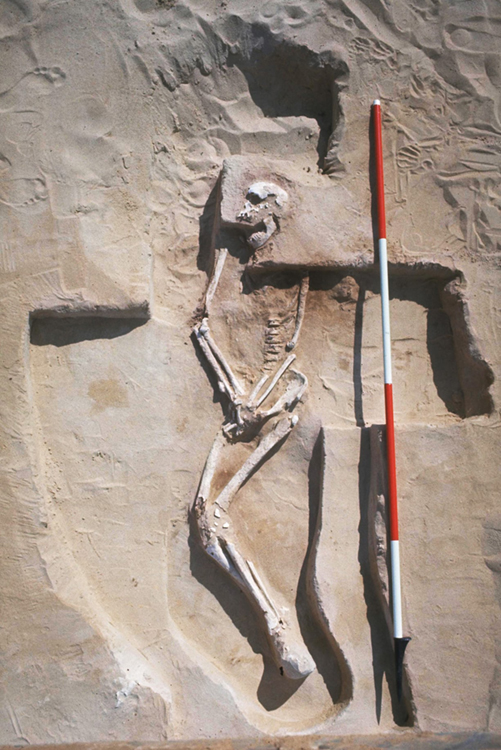Late last year, the oldest known human skeleton from Australia, known as Mungo Man, came home. The remains of Mungo Man, who lived more than 40,000 years ago, were transported in a special hearse that had been ritually cleansed with eucalyptus smoke back to his ancestral homeland in the Willandra region of New South Wales. Local representatives of the Mutthi Mutthi, Paakantyi, and Ngiyampaa peoples—the traditional owners of the Willandra region—were present to receive the casket, fashioned from 8,000-year-old wood, that held the remains. Mungo Man was later reburied in a private ceremony at an undisclosed location. The ceremony marked the end of a long campaign by indigenous Australians to return Mungo Man to his ancestral resting place.

Since his discovery by archaeologists near the edge of Lake Mungo, one of a series of ancient lakes that dried up about 20,000 years ago in Willandra, Mungo Man had a pivotal role in the understanding of the human colonization of Australia. Mungo Man was discovered in 1974. He was the best-preserved of three human burials found at the site that archaeologists began investigating in the late 1960’s. Archaeologists determined from the near-complete skeleton that Mungo Man was about 50 years old when he died. His body had been carefully placed in a shallow grave in a complex funeral ritual. His hands were found interlocked over his torso and his face had been sprinkled with a dusting of a bright mineral called red ochre.
Radiocarbon dating showed that Mungo man was buried about 42,000 years ago, making him the oldest human skeleton known from Australia. Archaeologists discovered stone tools and other artifacts near the burial site that were determined to be nearly 50,000 years old. This puts a firm minimum date for the earliest human arrivals in Australia. Scientists think that humans probably reached northern Australia from Asia even earlier than Mungo Man, but it took time, perhaps hundreds or even thousands of years, to migrate farther into the interior region of Lake Mungo.
Aboriginal people of the Willandra region were profoundly unhappy that their ancestor’s remains had been dug up and stored at the Australian National University in Canberra for study. For years, Aboriginal representatives have vied for the repatriation (return) of all ancestral remains and sacred objects. Their efforts have been helped by the Return of Indigenous Cultural Property Program of the Australia Department of Families, Housing, Community Services, and Indigenous Affairs. In 2015, the Australian National University relinquished the remains and apologized for their original excavation. The remains were kept in Canberra as repatriation plans were prepared. In November 2017, Mungo Man was repatriated along with the remains of more than 100 other ancient Aboriginal people recovered from archaeological and other investigations from the region. Aboriginal elders expressed a somber comfort knowing that their ancestor was home at last. As one elder said, “His spirit will be relieved.”
Untitled Document
Can't view the linked articles? Subscribe to World Book Online

World Book Online delivers a progressive sequence of core databases supported by supplemental
tools, such as language translation, graphic organizers, and unique Webquests. Moving from
Early World of Learning to World Book Advanced, World Book Online aligns end-users with their
appropriate learning levels. Each stand-alone site provides additional features to support the
needs of users’ specific capabilities.
The World Book Difference
World Book combines cutting-edge technology with traditional editorial excellence to produce
authoritative, trustworthy, and unbiased content. The digital content is updated in real time and
carefully curated for each learning level. Accessible 24/7, the content is available on a variety of devices.
World Book Online combines 21st-century instructional techniques with timely information.
By breaking down complex topics and using easily understandable text, World Book Online helps to
build fluency and increase comprehension. Featuring single sign-on capability, these sites are paired
with highly visual content to engage even the most reluctant reader. Our collection of resources kindles
a lifelong learning experience for every user. This adherence to clarity, currency, and accuracy makes
World Book’s digital offerings an information hub for the classroom, library, and beyond.
Image 1: Mungo Man was found in the deserts of what is now Mungo National Park in New South Wales, Australia. Credit: © Cornfield/Shutterstock
Image 2: The ancient remains of Mungo Man. Credit: © University of Melbourne